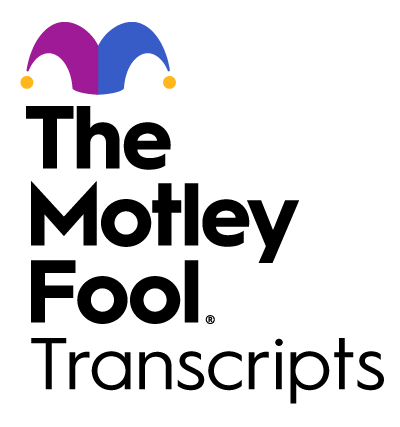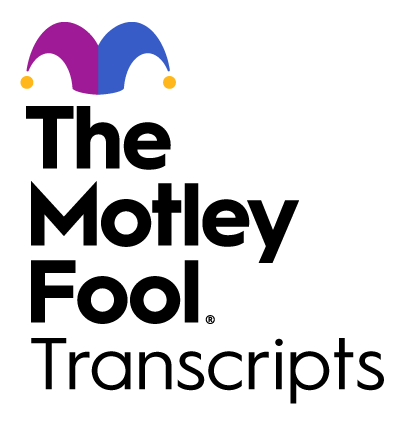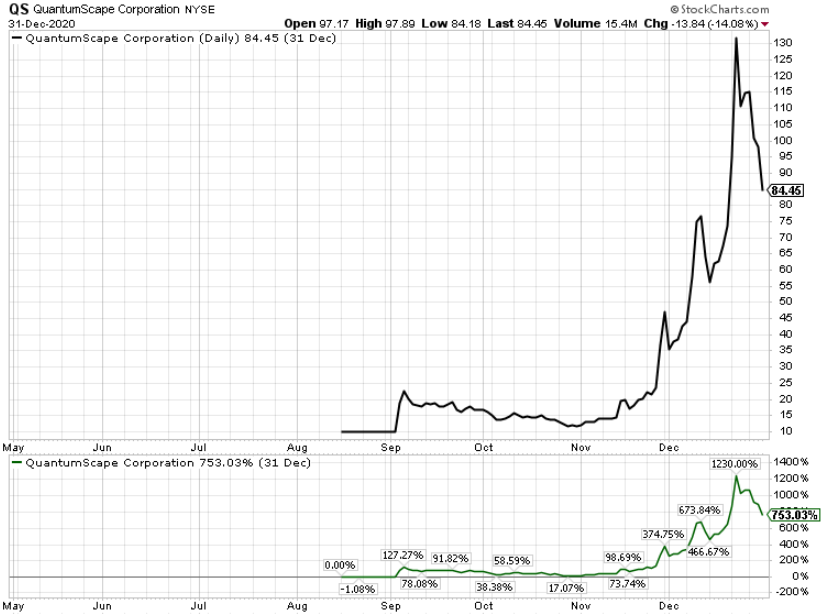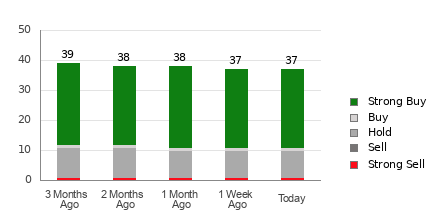“`html

Image source: The Motley Fool.
Atomera (NASDAQ: ATOM)
Q3 2024 Earnings Call
Oct 29, 2024, 5:00 p.m. ET
Highlights from Atomera’s Q3 2024 Earnings Call
Atomera recently conducted its third-quarter fiscal year 2024 update call. Mike Bishop, from Investor Relations, opened the meeting, reminding participants that it would be recorded and available for listening later. He piqued interest by announcing that Scott Bibaud, Atomera’s president and CEO, along with CFO Frank Laurencio, would provide insights followed by a Q&A session. The company emphasized that forward-looking statements may be shared during the call, reflecting inherent risks outlined in their SEC filings.
Market Opportunities and Technological Advancements
During his remarks, Scott Bibaud reflected on the significant progress Atomera has made over the past few months. He explained that Atomera’s team is actively engaged in developing innovative solutions and partnerships, particularly in the semiconductor industry.
Bibaud highlighted the growing power semiconductor market, which is projected to exceed $52 billion in 2024. The advancement of technology is key, especially in response to demands from large computing infrastructures and electric vehicles. A crucial player in this market is STMicroelectronics (ST), with whom Atomera collaborates on creating next-generation smart power products that incorporate Atomera’s MST technology.
Atomera has been assisting ST with process development, focusing on optimizing silicon performance and manufacturability. Encouragingly, Bibaud shared that Atomera’s support has been fruitful, with alignment between modeling and real silicon performances already validated multiple times. Furthermore, ST authorized him to reassure investors that production timelines remain promising, dependent mostly on ST’s readiness.
Challenging Traditional Standards
As technology evolves, so do the standards for power supply in data centers. The shift from 12-volt to 48-volt systems is gaining traction, driven by increased power demands associated with artificial intelligence. Bibaud explained that using 48 volts can potentially reduce power dissipation significantly—by a factor of up to 16 times—sparking intense competition among companies to deliver high-efficiency devices.
Atomera recently completed a 48-volt version of their SPX technology, marking a pivotal development aimed at optimizing performance in data centers. Though introductions to customers are still in the early stages, there is optimism regarding its potential impact on efficiency improvements.
In addition to these efforts, Atomera continues to explore licensing opportunities with various firms interested in MST technology, which has shown a capacity for providing over 20% efficiency gains. As interest grows, so does the potential for Atomera to establish significant partnerships moving forward.
To summarize, Atomera’s recent strides in technology development, particularly with ST and in the 48-volt power market, indicate promising prospects for the coming quarters, as the company dynamically adjusts to emerging industry standards and customer needs.
“““html
Atomera Highlights Game-Changing Trends in Semiconductor Manufacturing
The shift from FinFET to gate-all-around architecture signifies a significant change in semiconductor device design. As this evolution takes place, the projected number of epitaxial (epi) steps in manufacturing processes is set to increase more than threefold. This transformation paves the way for the incorporation of Material Science Technology (MST) into these crucial epi steps, enhancing device performance.
As epitaxy gains importance, MST can be integrated more seamlessly into production workflows. Adding MST is less costly when included with existing epi steps rather than being introduced independently. Moreover, advanced node production stands to gain considerably from our technology, particularly in blocking dopants like phosphorus, a key tool for forming advanced source-drain structures. This point was emphasized in Robert Mears’s recent presentation at the ECS PRiME Conference.
Achieving high production yields is increasingly challenging due to the tight channel lengths in today’s cutting-edge transistors. We believe MST can address this issue, potentially affecting the production volume and cost of GPUs needed to satisfy the demands from the AI sector. Our new head of business development, with extensive industry experience, is expected to drive significant growth in this market. Currently, we are collaborating with multiple customers focused on advanced node technology. The memory sector, which is valued at over $110 billion in 2023, shares similarities with the advanced node segment but is particularly focused on minimizing production costs as it operates as a commodity market.
Like the transition to gate-all-around, the memory sector is striving for smaller node sizes, finding opportunities to leverage material advancements to meet strict yield and cost targets. The introduction of epi in memory device construction mirrors developments in advanced logic platforms, enabling MST to be an incremental addition that delivers substantial performance and cost advantages. We are optimistic about our technology’s potential in improving performance, die size, and profit margins for our customers, even after accounting for our royalty fees.
The semiconductor industry presents a vast opportunity, comprising around 20% of the overall market, characterized by high volume and long technology cycles. We are actively engaged with multiple customers in this space. Additionally, the RF-SOI sector also represents an excellent opportunity where we can offer performance enhancements deemed unattainable without MST. Our partnerships encompass a significant share of devices built on RF-SOI substrates.
We have submitted proposals to customers across these segments and expect some to evolve into Joint Development Agreements (JDAs) or licensing contracts soon. Notably, we are in discussions about a potentially transformative agreement that we hope to announce in the upcoming months. Recently, we established a partnership with the Center for Integrated Nanotechnologies at Sandia National Labs to advance our efforts in silicon technology. Early work with Texas State University has indicated that MST can alleviate stress during the production of GaN on silicon substrates, thereby improving crystal quality, as demonstrated in physical tests presented in recent slides.
We are now moving towards fabricating GaN devices to validate that physical improvements translate into electrical benefits. As GaN on silicon emerges as a high-volume, cost-effective substrate for future devices, the successful implementation of our technology could be advantageous for manufacturers in this space. The GaN market is growing rapidly, and we expect this technology to yield revenue more quickly compared to our traditional offerings, thus accelerating our time to market. In the last quarter, customer engagement has surged, especially with large companies recognizing the critical need for our technology.
Now, let’s discuss our recent business updates. JDA 1 has requested further data to validate MST’s effectiveness for a specific application, prompting us to plan wafer runs to showcase how MST meets their needs. Negotiations with JDA 2 concerning a company-wide license that covers multiple technologies are ongoing, although progress has been slower than desired. Our fabless licensee is expected to have wafers ready soon, and we believe positive results could lead to a production transition with both them and their foundry partner.
Besides these current negotiations, we have proposals pending with several other clients in addition to a major customer whose agreement we are drafting. At this moment, the Atomera team is filled with optimism regarding our future prospects. Our collaboration with STMicroelectronics, a substantial entity with a long lifecycle, is progressing well towards production as confirmed by ST.
The opportunities we’ve outlined are expansive, especially as we inch closer to announcements that could solidify our market position. Our efforts in gate-all-around and memory development align closely with the semiconductor industry’s most significant driver today—the rollout of AI infrastructure. Additionally, our GaN initiatives align with a major industry movement, and we anticipate a quicker revenue realization than with other projects. Exciting times lie ahead at Atomera.
To seize these opportunities, significant growth will be essential to support anticipated demands. Now, I’d like to pass the floor to Frank for a financial overview.
Francis B. Laurencio — Chief Financial Officer
Thank you, Scott. As of market close today, we released our financial results for the third quarter of 2024. The following slide outlines our summary financials. Our GAAP net loss for the quarter ending September 30, 2024, was $4.6 million, or $0.17 per share, compared to a $5 million net loss, or $0.20 per share, for the same period in 2023.
In the second quarter of 2024, our GAAP net loss was $4.4 million, or $0.16 per share. Revenue in Q3 totaled $22,000, down from $72,000 in Q2 and up from zero in Q3 of 2023. GAAP operating expenses for Q3 2024 were $4.8 million, down approximately $534,000 from $5.4 million in Q3 2023. This decrease was primarily due to a $546,000 reduction in R&D expenses and a $117,000 decline in sales and marketing expenses, partially offset by a $129,000 increase in general and administrative expenses.
The drop in R&D spending was largely due to the closure of our outsourced foundry, TSI Semiconductor, at the beginning of this year. Sales and marketing expenses decreased year-over-year mainly due to a lower headcount. Sequentially, our GAAP operating expenses rose by $191,000 to $4.8 million in Q3 compared to $4.6 million in Q2, reflecting a $170,000 rise in R&D expenditures.
“`
Atomera Reports Q3 2024 Financial Results: Assessing Losses and Future Opportunities
Atomera’s recent financial report for Q3 2024 reveals a non-GAAP net loss of $3.9 million, showing an improvement from a loss of $4.3 million in Q3 2023. The increase in sales and marketing expenses by $41,000 was offset slightly by a minor reduction in general and administrative costs.
In terms of operational expenses, the smaller loss was mainly attributed to reductions in R&D and sales and marketing costs. However, there was a sequential increase of $251,000 in non-GAAP net loss when compared to Q2 2024, primarily due to higher operating expenses coupled with lower revenue. Notably, the differences between GAAP and non-GAAP operating expenses are mainly due to non-cash stock compensation expenses, which totaled approximately $900,000 in Q3 and $1 million in both Q2 2024 and Q3 2023. As of September 30, 2024, Atomera reported a cash balance of $17.3 million, down from $18.3 million at the end of Q2 2024.
During this past quarter, cash used in operating activities was $2.9 million, down from $3.2 million in Q1 2024. Atomera sold about 691,000 shares through its ATM facility, fetching an average price of $3.18 per share, thereby generating net proceeds of approximately $2.1 million. As of the end of September, the company had 28.3 million shares outstanding, with total revenue recorded in Q3 remaining at $22,000, deriving solely from MSTcad license revenue.
For Q4 2024, the company anticipates revenue to be similar to Q3’s figures. Notably, Atomera has declined to provide revenue guidance for periods beyond this quarter. The next significant revenue milestone is contingent upon completing the qualification process with ST Microelectronics, a timeline that remains undisclosed and is entirely controlled by them. Regarding expense guidance, non-GAAP operating expenses for the first nine months of 2024 totaled $11.5 million, positioning Atomera for total expenses between $15.75 million and $16.00 million for the full year, which is less than previous forecasts.
Looking ahead to 2025, Atomera plans to invest further in sales and marketing, while also seeking optimum strategies for using outsourced foundry services. This indicates a likely increase in non-GAAP operating expenses, expected to reach between $16 million and $17 million. Further updates will be provided in the next quarterly call.
In the context of industry funding, Atomera’s proposal for CHIPS Act funding is still awaiting decisions following its submission in July concerning advancements in GaN and other compound semiconductors. The next phase of the Request for Proposal (RFP) is expected to be announced in late Q4 or early Q1. Insights from the recent conference attended by management indicate numerous applications and funding avenues for Atomera under the CHIPS Act, highlighting the company’s innovative technologies that attract government interest.
As the call shifted back to Scott Bibaud for closing remarks, excitement about the company’s prospects was apparent. Bibaud expressed confidence, noting that Atomera’s technology aligns with key industry trends and has attracted attention from significant players in the sector.
Investor relations moderator Mike Bishop opened the floor for questions, highlighting the opportunity for participants to engage directly with management about their insights and future strategies.
Richard Shannon from Craig-Hallum, the first to pose a question, sought clarity on the nature of active conversations and potential transformative developments for Atomera. Bibaud elaborated on the discussions with a major customer, emphasizing the unique revenue potential and the careful nature of partnership proposals.
The ongoing dialogue among analysts reflects a keen interest in Atomera’s progression across various phases of client engagement, as well as the implications of new technology segments moving toward production.
Technology Advancements Propel Semiconductor Innovations Forward
Key players in semiconductor development are experiencing an intriguing transition as they strive for efficiency and speed in their production capabilities.
Scott A. Bibaud — President and Chief Executive Officer
As we dive deeper into partnerships with advanced node customers, we anticipate that some of the major players like gate-all-around and memory manufacturers will expedite their processes. These companies boast extensive engineering teams dedicated to pioneering these new technologies.
Collaboration with these firms has been robust. They often request significant data and push us to conduct numerous experiments together. Their vast resources and determination suggest that we can expect a quicker time to market. This backdrop sheds light on the range of projects we currently have underway.
Richard Shannon — Analyst
Scott, you’ve provided some valuable information. Let’s explore specific technology developments, particularly the progress in RF-SOI. In earlier discussions, you mentioned thinner wafers as a critical factor affecting RF-SOI advancements. Can you elaborate on how this shift may resolve existing delays in the industry?
Scott A. Bibaud — President and Chief Executive Officer
The industry has identified thinner wafers as a key to enhancing performance. Earlier this year, we secured an agreement with Soitec for the production and sale of engineering wafers. This allows our customers to conduct more tests and bring this technology to market. Progress is ongoing, and while we haven’t made any announcements yet, we are optimistic about the potential results we are seeing.
Richard Shannon — Analyst
It sounds like there are notable advancements in the areas you’re exploring. Are your efforts focusing on collaborations with both foundries and fabless customers?
Scott A. Bibaud — President and Chief Executive Officer
Currently, we are primarily collaborating with manufacturers who operate gate-all-around technologies. In the past, we worked alongside both foundry partners and fabless companies to influence manufacturing practices. Today, however, the complexity of gate-all-around technology limits the influence that fabless customers have, making partnerships with manufacturers more essential.
Richard Shannon — Analyst
To wrap up, let’s discuss any updates regarding JDA 1. It seems that you’ve been working on central engineering to further relationships with specific customer groups.
Scott A. Bibaud — President and Chief Executive Officer
The current requests from JDA 1 differ slightly from past engagements. Initially, at the central engineering level, they verified our technology with a thumbs-up for further usage. Now, our discussions revolve around a specific application and a solution that precisely meets performance metrics. It’s common for them to require extensive data to reassure their doubts about our technology at this stage.
Richard Shannon — Analyst
Thank you for the insights, Scott.
Mike Bishop — Investor Relations
Thanks, Richard. We have multiple questions coming in. One inquiry asks if the recent announcement about Sandia Labs relates to the CHIPS Act application submitted in July.
Francis B. Laurencio — Chief Financial Officer
No, this announcement is separate from CHIPS Act matters. This development signifies new opportunities to showcase our GaN technology.
Regarding the CHIPS Act, we submitted a proposal focusing on GaN and other applications in compound semiconductors. Our work at Sandia demonstrates the physical advantages of MST in the development of GaN on silicon wafers. While we had good data from Texas State, Sandia has provided an avenue to test electrical performance directly on those substrates. This work incurs no cost to us, and success could bolster our appeal for both CHIPS Act funding and various commercial agreements we’ve pursued concerning GaN technology. Each effort remains independent, yet intertwined.
Mike Bishop — Investor Relations
Thanks, Frank. Additionally, we have questions concerning proposals and the statuses of our pipeline projects. Are all proposals currently in phases 1 through 3?
Scott A. Bibaud — President and Chief Executive Officer
Yes, all active proposals are currently with customers in our pipeline. They span various stages; not all are in Phase 3 as some are still in Phase 1.
These partnerships continue to drive our initiatives in the semiconductor arena as we adapt to ever-evolving industry needs.
“`html
Financial Insights from the Latest Earnings Call
Investor Relations Update
Mike Bishop — Investor Relations
Alright. Frank, there are questions about our funding plans. Can you share our outlook regarding funding and cash requirements?
Francis B. Laurencio — Chief Financial Officer
Of course. As reflected in our financial results, we finished the quarter with a cash balance lower than at the end of June. We aimed to minimize stock sales under our ATM program since the price was near historic lows. Balancing the need to avoid diluting our shareholders while maintaining at least twelve months’ worth of cash for planned expenditures is essential, and this is a requirement of GAAP accounting. Hence, we prefer to act conservatively when stock prices are lower.
Mike Bishop — Investor Relations
Richard has a follow-up question. Richard, please go ahead.
Richard Shannon — Analyst
Thank you, Mike. Scott, I want to revisit your statement about power in the seven- to 48-volt range. There are interesting dynamics here that we are familiar with. How much of your work in this voltage range relates specifically to 48 volts for servers versus wider applications?
Scott A. Bibaud — President and Chief Executive Officer
We’ve been discussing our SPX technology for some time. Initially, the focus was on the seven to 48 volts, but most industry interest leans toward the lower end of that range. Currently, the 48-volt applications are indeed linked to the growing demand in data centers. The transistor structure we use is suitable for various 48-volt power needs, but the main opportunity is presently in data centers. We also refined this technology specifically for 48 volts, making it distinct from our lower-voltage developments. Early testing results indicate significant efficiency improvements that could appeal to potential customers, and we are beginning discussions with them now.
Richard Shannon — Analyst
That’s great. I’m eager to learn more. My next question follows up on your previous remarks about legacy nodes. It seems from our discussions that the timeline for moving to production in these older nodes tends to be longer than with newer ones. Is there anything we can do to speed that up, or is this simply part of working with legacy technology?
Scott A. Bibaud — President and Chief Executive Officer
This is an insightful question. Our strategy involved promoting our power SPX technology, and we announced having one customer implementing it. We anticipated that their success would stimulate competition from other companies to adopt similar solutions. While some interest has materialized, overall, the response hasn’t been as swift as we hoped, resulting in slower development across the board. However, we believe that once ST reaches production, it will significantly impact the industry. We have ongoing proposals with companies entering this space, which we expect will lead to further developments before ST’s production begins.
Reflecting on ST’s history, we partnered with them around 2017 or 2018. We achieved impressive results by the end of 2019, but progress was interrupted by the pandemic and the construction of a new factory, delaying new process development until 2022.
While their production decision timelines are similar to others, the shift from an established legacy node requires careful consideration and does not happen annually. Thus, we often find ourselves waiting for such decisions to occur.
Richard Shannon — Analyst
That makes sense. I will step out of line now. Thank you, Scott.
Scott A. Bibaud — President and Chief Executive Officer
Thank you, Richard.
Mike Bishop — Investor Relations
Looks like we have one or two more inquiries. You mentioned ST in your earlier comments. How is that relationship progressing, and what updates can you provide?
Scott A. Bibaud — President and Chief Executive Officer
First, let me emphasize that ST is an excellent partner. They originated the BCD technology, which our SPX technology relies on. Collaborating with their expert teams has been beneficial for our product improvements. We’ve been so successful with ST that we’ve initiated a ‘land-and-expand’ strategy, engaging with other departments within ST. As a result, we might broaden our collaboration even before the first product hits volume production.
Mike Bishop — Investor Relations
Lastly, can you share insights regarding the gate-all-around silicon results showcased at PRiME 2024?
Scott A. Bibaud — President and Chief Executive Officer
Certainly. This is a technical subject, but during PRiME 2024, we presented information on gate-all-around technology. The challenge lies in maintaining a phosphorus-doped channel while avoiding doping in the surrounding channel. If not managed well, it risks causing performance issues and potential short-circuiting. We believe that by applying MST at this interface, we can enhance performance and yield, which is a critical area of our focus moving forward.
“`
Atomera’s Innovations Aim to Boost Manufacturing Efficiency
Enhancing Transistor Yield with Diffusion Blocking Technology
Atomera is focused on improving performance and efficiency in semiconductor manufacturing. By preventing phosphorus from leaking into the channel, the company aims to enhance transistor yield for gate-all-around manufacturers. This innovation is one of several applications Atomera is presenting to its customers.
Insights from Recent Conference
Slides from the recent conference, where Robert discussed these developments, may soon be publicly available. These materials will illustrate how Atomera’s diffusion blocking technology can effectively deliver the promised benefits.
Mike Bishop — Investor Relations
Thank you, Scott. I believe that concludes our Q&A. Please prepare for your closing remarks.
Scott A. Bibaud — President and Chief Executive Officer
Thank you for joining us today. We appreciate your interest in the progress Atomera is making. Keep an eye out for our latest news, articles, and blog posts on our website, atomera.com. If you have further questions, feel free to reach out to Mike Bishop for assistance. We appreciate your support and look forward to updating you in the near future.
Mike Bishop — Investor Relations
Thank you, Scott. This wraps up the Atomera third quarter 2024 conference call.
Duration: 0 minutes
Call Participants:
Mike Bishop — Investor Relations
Scott A. Bibaud — President and Chief Executive Officer
Francis B. Laurencio — Chief Financial Officer
Scott Bibaud — President and Chief Executive Officer
Richard Shannon — Analyst
Frank Laurencio — Chief Financial Officer
More ATOM analysis
All earnings call transcripts
This article is a transcript of the conference call produced for The Motley Fool. We acknowledge the potential for errors or inaccuracies and advise conducting your own research, including reviewing the call and the company’s SEC filings. Please see our Terms and Conditions for more information, including our Disclaimers of Liability.
The Motley Fool has no position in any of the stocks mentioned. The Motley Fool has a disclosure policy.
The views expressed in this article are those of the author and do not necessarily represent the opinions of Nasdaq, Inc.








